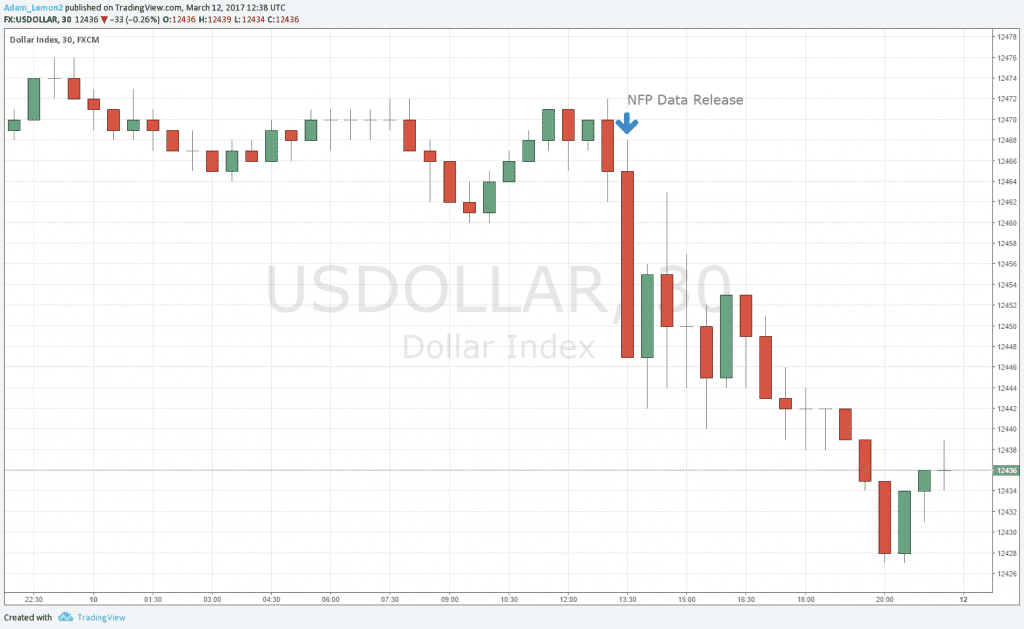Last Friday’s highly important U.S. non-farm payrolls data was announced last Friday. The figure came in above the market’s expectations, at 235,000 new jobs compared to the consensual estimation of 196,000. The unemployment rate fell slightly, in line with expectations, from 4.8% to 4.7%. Average Hourly Earnings came in slightly below expectations at 0.2% - an increase of 0.3% had been expected.
How did the Dollar react immediately after the announcement? The U.S. Dollar Index fell, and the greenback fell against every other major currency, even currencies that have been very weak such as the British Pound, and New Zealand and Canadian Dollars. The 30-minute chart of the U.S. Dollar Index below tells the story:

This looks like a classic example of a currency reacting negatively to positive news, which is always significant when it happens, but is this really what occurred? Possibly not, because the Average Hourly Earnings figure was disappointing and it seems the market has been paying a lot of attention to that in recent months. Another factor is that the ADP forecast released last Wednesday suggested that the non-farm payrolls number would be considerably more positive, at 298,000, and the real number fell short of that by approximately 21%. This arguably had the effect of raising the market’s expectation, which was ultimately disappointed.
If all these numbers had been more positive and the market had still reacted as it did following the announcement, I would have said it spelt trouble for the U.S. Dollar. When a currency reacts bearishly to bullish news, that is a great indication that is probably going to fall further. In any case, the market is now looking to the FOMC releases due next Wednesday and a probable rate hike, and the Dollar will probably trade without any clear direction until that time. The Non-Farm Payrolls data is already almost forgotten.

